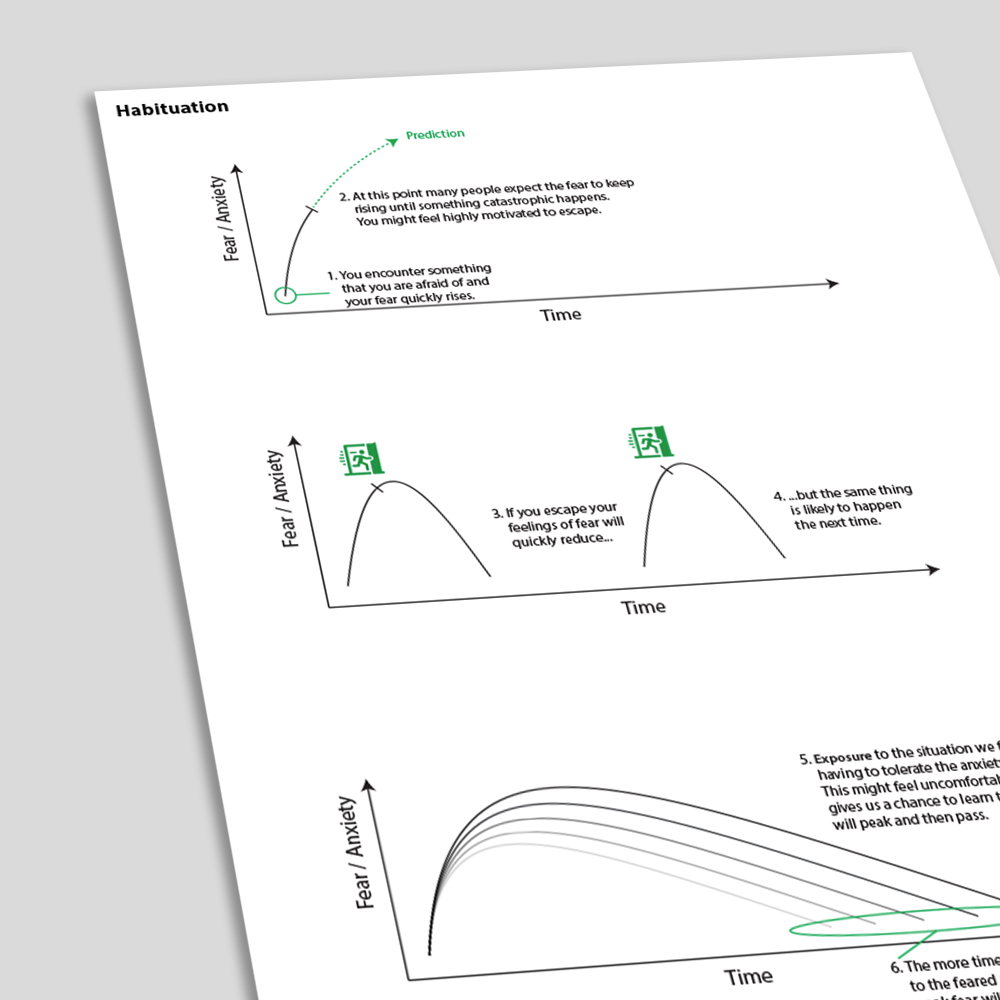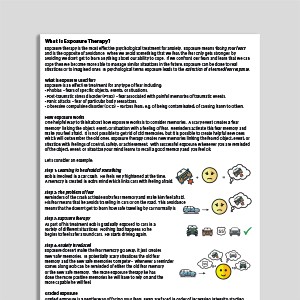Habituation
Download or send
Related resources
Tags
Languages this resource is available in
Problems this resource might be used to address
Techniques associated with this resource
Mechanisms associated with this resource
Introduction & Theoretical Background
Traditional models of exposure therapy are built upon the behavioral foundation of habituation. During an exposure trial habituation is said to occur when a fear response to a stimulus diminishes following repeated presentations of the stimulus. Clinicians are interested in two types of habituation:
- Within-session habituation (WSH) describes peak fear level during an exposure minus ending fear level.
- Between-session habituation (BSH) describes peak fear level during an exposure minus peak fear level during the subsequent exposure.
When providing the rationale for exposure therapists explain that repeated and prolonged exposure (during which safety behaviours are not used) leads to a reduction in anxiety during the exposure session, and across sessions. A clinical guideline which is often used to determine the length of an exposure session is a 50% reduction from the starting level of anxiety, and in which anxiety-reducing behaviors are judged not to have been responsible for the
Therapist Guidance
This is a Psychology Tools information handout. Suggested uses include:
- Client handout – use as a psychoeducation resource
- Discussion point – use to provoke a discussion and explore client beliefs
- Therapist learning tool – improve your familiarity with a psychological construct
- Teaching resource – use as a learning tool during training
References And Further Reading
- Benito, K. G., & Walther, M. (2015). Therapeutic process during exposure: habituation model. Journal of obsessive-compulsive and related disorders, 6, 147-157.
- Jacoby, R. J., & Abramowitz, J. S. (2016). Inhibitory learning approaches to exposure therapy: A critical review and translation to obsessive-compulsive disorder. Clinical Psychology Review, 49, 28-40.










